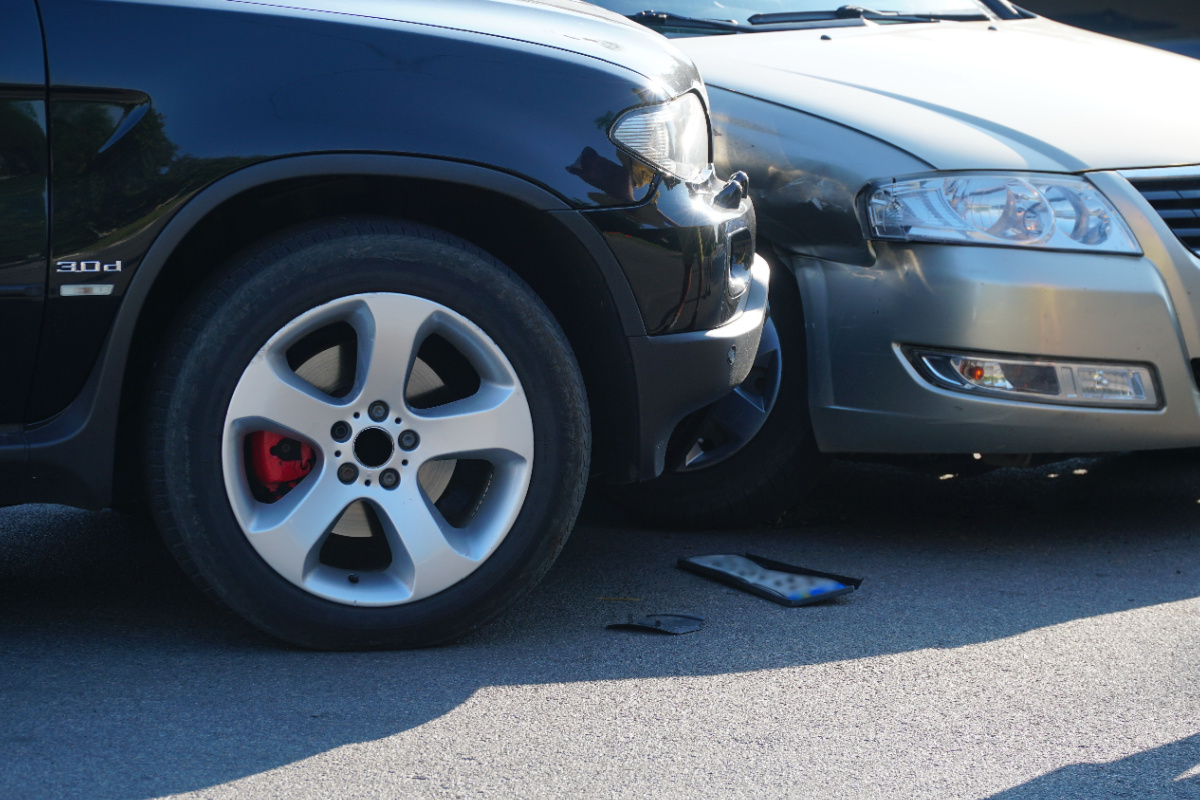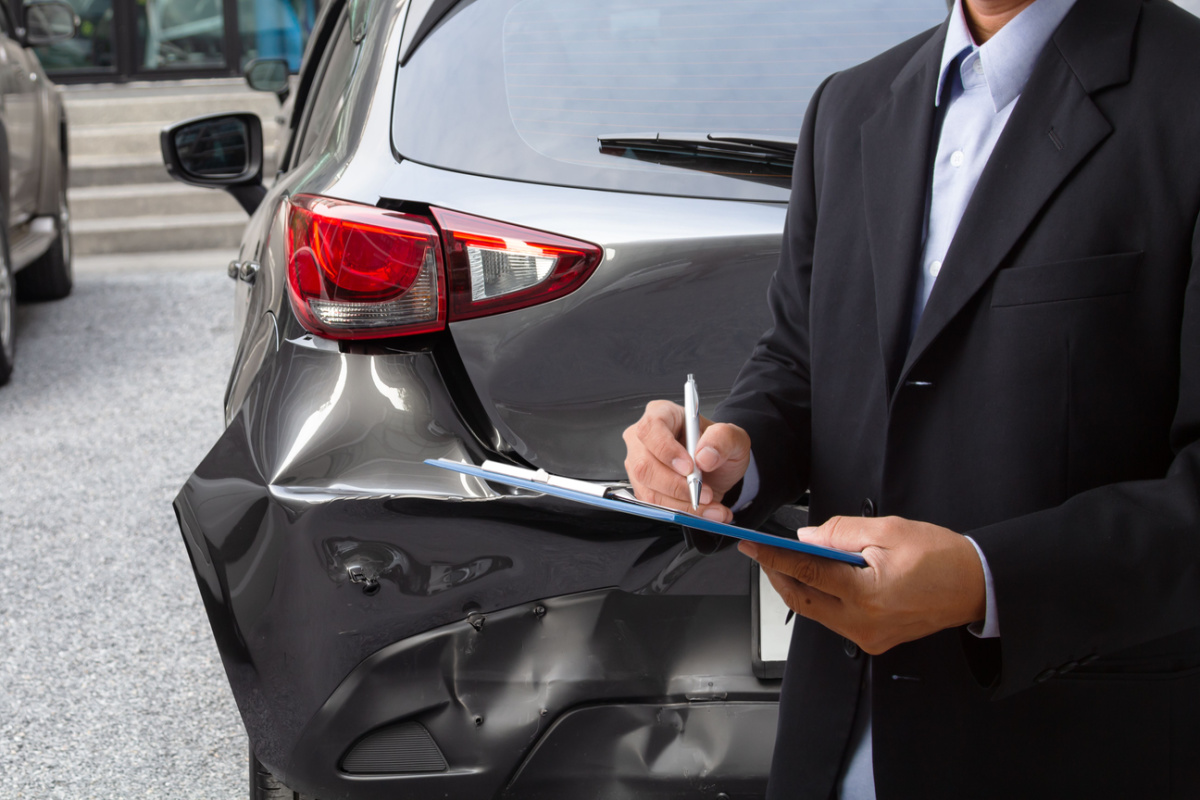- Firm Overview
- Practice Areas
- Testimonials
- Community
- Blog
- FAQ
- Contact
GET A FREE CONSULTATION (702) 680-1111

In November of 2022, a hit and run accident turned into a high speed chase on the Las Vegas Strip. A YouTuber known as TK was driving a modified BMW 540i on Tropicana Avenue near Allegiant Stadium when a Volvo rear-ended him. Intriguingly, the Volvo had no insurance and left the scene abruptly. TK documented the entire episode with his phone and later discussed the event with CBS Channel 8 News, mentioning damage to his car’s rear bumper and sensor.
The driver of the Volvo informed TK of his employment as a Door Dash driver and his lack of auto insurance. He proposed to compensate TK with $30, an offer TK rejected before returning to his vehicle. Shortly after, the Volvo driver sped away.
In response, TK pursued the fleeing vehicle at speeds reaching 100 mph. Both vehicles darted through traffic, with TK asserting the Volvo driver collided with at least three other cars. The high-speed pursuit continued onto the Strip, where the Volvo driver brandished a Glock semi-automatic handgun, warning TK to back off. At this point, TK contacted 911. Although advised to cease the chase, TK persisted until reaching the intersection of Las Vegas Boulevard and Sunset, where the Volvo driver escaped off-road. Local police later caught up with TK and filed a report. Despite acknowledging the recklessness of the chase, TK defended his actions, citing his experience as a retired Navy veteran with a background in car racing.
After experiencing a hit and run incident, safety is paramount; one should move to a secure location away from active traffic, if possible. Secondly, contacting emergency services ensures professional assistance and creates an official record of events.
Documenting the scene comes next. Taking photographs or videos can provide invaluable visual evidence. In addition, making note of any relevant details such as time, location, and the sequence of events can aid future investigations. If there are witnesses, collecting their contact information can offer an additional layer of support for a case.
Contacting one’s insurance company is another immediate step. While the offending driver may have fled, reporting the accident promptly allows one to explore options like uninsured motorist coverage, which may apply in such scenarios. Finally, maintaining all medical records following the incident is advisable for tracking injuries may not be apparent right away but could emerge later.
In many jurisdictions, hit and run accidents are considered serious offenses with substantial legal consequences for perpetrators. Upon conviction, penalties can range from monetary fines to imprisonment, depending on the severity of the incident and state-specific laws. Lesser cases, typically those involving property damage only, may result in fines and points on one’s driving record. More severe cases, especially those involving bodily harm or death, can escalate to felony charges with potential for imprisonment.
In addition to legal penalties, perpetrators might also face increased insurance premiums or even policy cancellation. A conviction usually goes on the driving record, making it difficult to find affordable insurance coverage in the future. Furthermore, civil liabilities can arise; victims or their families may choose to file a lawsuit seeking damages for injuries, emotional distress, or loss of income.
In the aftermath of a hit and run accident, gathering evidence plays a pivotal role in substantiating any legal claims or insurance adjustments. Quick action can yield valuable data for later use. For instance, capturing photographs or videos of the accident scene, vehicle damage, and any injuries provides visual proof of the incident’s impact. Skid marks, broken glass, or any other debris on the road can also serve as crucial indicators in reconstructing the sequence of events.
Witness testimonies are another form of valuable evidence. Individuals who saw the incident can offer accounts that may help identify the responsible party or at least corroborate the victim’s version of events. Therefore, securing contact information from any eyewitnesses is beneficial.
Documentation extends to digital formats as well. In today’s world, many public spaces and even private residences have surveillance cameras possibly capturing the incident. Requesting such footage in a timely manner can offer more angles and context to what transpired.
Medical records, too, are integral in showcasing the physical ramifications of the incident. Prompt medical attention ensures injuries are adequately treated and documented. Such records can demonstrate the degree of physical suffering, often a key factor in determining the value of a claim.
Surveillance footage can serve as a compelling form of evidence in hit and run cases. It can not only substantiate a victim’s account of events but also potentially help in identifying the responsible party. Cameras placed at intersections, parking lots, and businesses near the accident scene may capture useful information. In some instances, such footage has led to the identification of the make, model, and even license plate of the fleeing vehicle.
Aside from identifying the perpetrator, surveillance video can offer additional insights into the incident. It can shed light on the behavior of the parties involved before, during, and after the accident. Was the offending vehicle speeding? Did it run a red light? Such details can significantly influence the assessment of fault and liability in a case.
However, time is of the essence in securing surveillance footage. Businesses and municipal agencies may only retain video data for a limited period before it is overwritten or deleted. Therefore, acting promptly to request and review any available footage is highly advisable.

Dealing with insurance claims after a hit and run accident presents its own set of challenges. Without an offending driver, traditional avenues for compensation through the other party’s insurance provider are unavailable. However, victims may still have options for financial recovery through their own insurance policy.
Uninsured motorist coverage, often included in auto insurance policies, can become particularly useful in such cases. It is designed to cover damages when the at-fault party is either unidentified or uninsured. After a hit and run incident, an insurance claim under this provision might offer compensation for medical expenses, property damage, and even pain and suffering, depending on the policy specifics.
Another avenue is making a claim under the collision coverage of an auto insurance policy. While this option may require payment of a deductible, it can still provide some financial relief for vehicle repairs.
Though insurance policies vary widely, prompt reporting of the incident is generally advisable for timely and efficient claims processing. Delay in reporting may arouse suspicion or even result in a claim denial.
If you have suffered an injury in a hit and run accident, call 702-680-1111 or contact our experienced legal team today, and we will work to get the compensation you deserve.

As founder of Gina Corena & Associates, she is dedicated to fighting for the rights of the people who suffer life-changing personal injuries in car, truck and motorcycle accidents as well as other types of personal injury. Gina feels fortunate to serve the Nevada community and hold wrongdoers accountable for their harm to her clients.